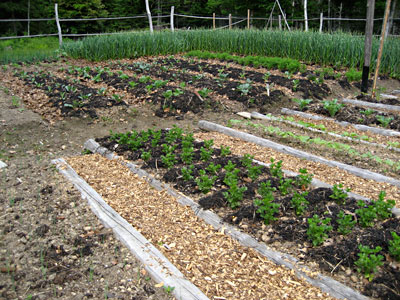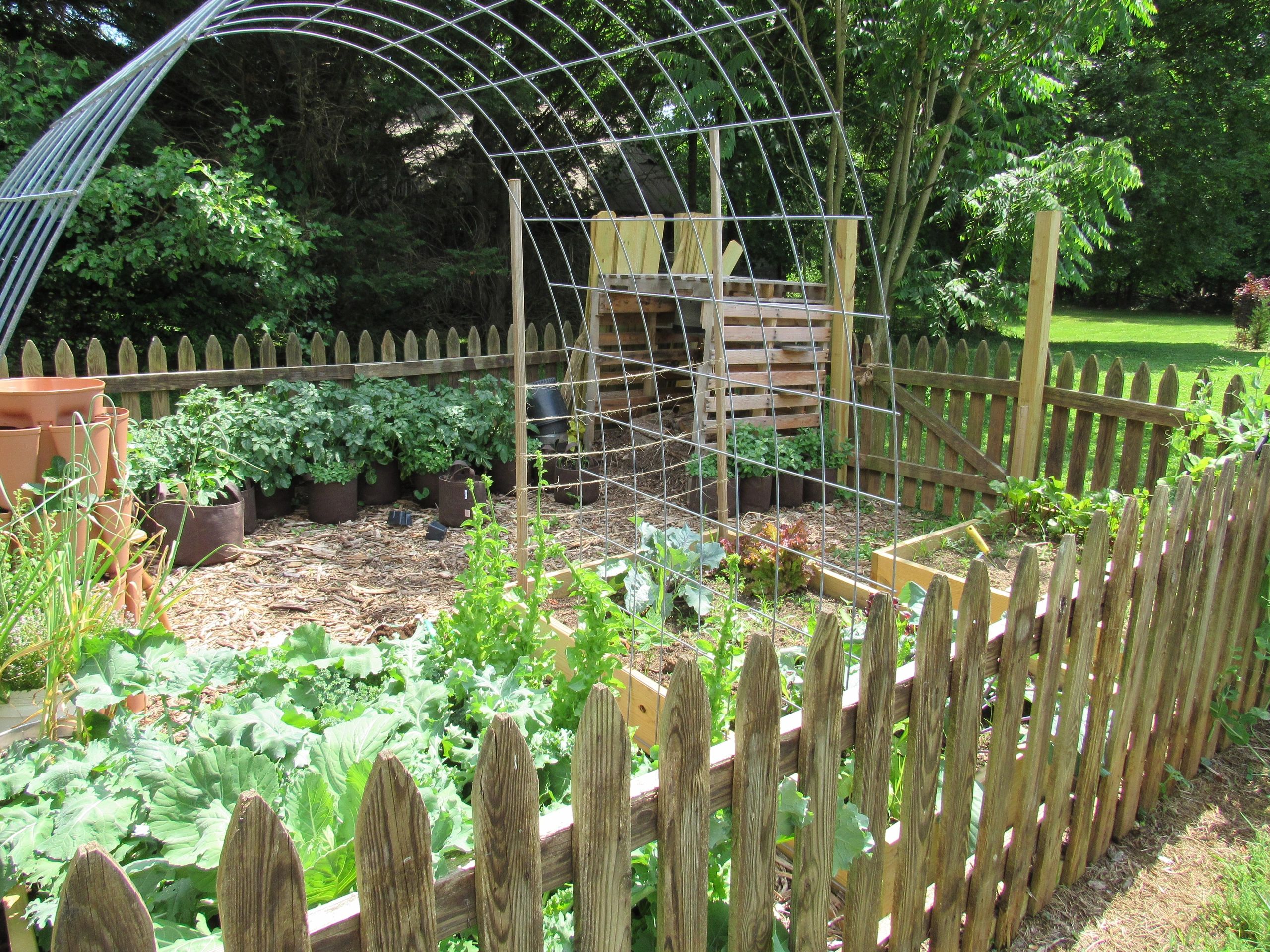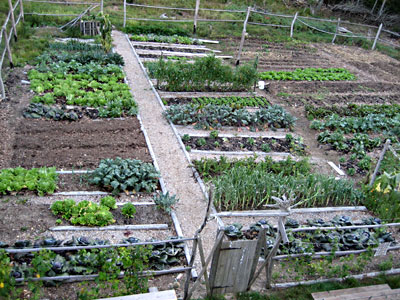How to Adapt Your Homestead Gardening
How to Adapt Your Homestead Gardening
Blog Article
Learn Exactly How to Cultivate a Thriving Horticulture Setting for All Ability Levels
Producing a prospering garden is a complex endeavor that can be accepted by people at any skill degree. By taking a look at key parts such as soil wellness, proper plant choice, and seasonal treatment routines, one can create a lasting horticulture practice that yields enjoyable outcomes.
Understanding Your Yard Room
In the realm of gardening, comprehending your yard room is vital to cultivating a thriving landscape (Homestead Gardening). The very first step in this endeavor includes assessing the details attributes of your plot. Variables such as dirt structure, sunlight exposure, and drainage play critical duties in establishing the viability of your garden for numerous sorts of plants
Begin by carrying out a dirt examination to analyze pH levels and nutrient content, which will inform any type of necessary modifications. Additionally, observe just how much sunlight your room gets throughout the day. Various plants have varying light requirements; some prosper in full sun, while others prefer complete or partial color.

Finally, review the readily available area and plan accordingly. This includes considering plant elevations and spread out to make sure sufficient room for development without congestion. By getting an extensive understanding of your yard area, you set the foundation for an effective horticulture experience.
Selecting the Right Plants
Picking the right plants for your yard calls for mindful consideration of various factors, including environment, dirt conditions, and individual choices. Begin by examining your neighborhood environment, as specific plants thrive particularly temperature level arrays and weather patterns. Tropical plants may not make it through in colder areas, while hardy perennials can endure harsh winters.

Consider your individual preferences, consisting of aesthetic appeal and maintenance levels. Choose whether you like dynamic blossoms, rich vegetation, or edible crops. Additionally, consider the moment and initiative you agree to purchase plant treatment, as some ranges require even more attention than others.
Lastly, believe about the garden's design and light exposure. Sunshine patterns throughout the day will certainly affect your choices-- some plants require full sun, while others thrive in color. By thoughtfully assessing these aspects, you can produce a effective and harmonious garden customized to your atmosphere and tastes.
Crucial Horticulture Tools
A fully equipped gardener can substantially enhance their gardening experience and end results. Crucial gardening devices are basic to growing an effective garden, no matter skill degree. Initially, a tough spade is very useful for excavating and turning dirt, while a trowel allows for exact growing and hair transplanting of smaller sized plants.
Trimming shears are essential for maintaining plant health by removing dead or disordered branches, promoting better air blood circulation and development. Furthermore, a hand rake serves for removing debris and aerating the dirt, ensuring optimal problems for plant roots.
Gardening gloves secure hands from chemicals, thorns, and blisters, making them an essential accessory. A watering can or tube with an adjustable nozzle makes sure that plants receive adequate dampness without overwatering.
Lastly, think about spending try here in a durable wheelbarrow for transporting soil, plants, and tools around the yard effectively. By constructing a quality toolkit that includes these important things, garden enthusiasts can take on various tasks with self-confidence and ease, leading the way for a flourishing gardening setting. Bear in mind, the right devices not only boost performance but also boost the total enjoyment of the gardening procedure.
Dirt Prep Work and Upkeep
Quality soil is the structure of an effective garden, making correct preparation and upkeep crucial for healthy and balanced plant development. Based on the test results, amendments can be made to optimize dirt problems for specific plant requirements.
Including natural matter, such as garden compost or well-rotted manure, is crucial for boosting dirt structure and fertility. This not only improves vitamins and mineral accessibility yet also advertises helpful microbial activity. In addition, correct drainage is essential; heavy clay soils might require the addition of sand or perlite to enhance oygenation.
Normal upkeep of dirt health and wellness includes mulching, which conserves dampness and suppresses weeds. Furthermore, rotating crops annually helps stop nutrient deficiency and lowers bug and condition threats. It is additionally important to stay clear of over-tilling, which can interfere with soil structure and harm beneficial microorganisms.
Eventually, a regular dedication to dirt preparation and upkeep will certainly lead to a flourishing yard, guaranteeing that plants get the crucial nutrients they need for durable development and productivity.
Seasonal Care and Administration

In spring, emphasis on planting brand-new seeds and seed startings, while also performing dirt tests to modify nutrient shortages. Consistently inspect for diseases and bugs, as these can proliferate with the warming climate. Summertime demands regular watering and mulching to preserve moisture, together with pruning for far better air flow.
As fall techniques, it's time to prepare the garden for dormancy. This consists of harvesting crops, tidying up particles, and using a layer of mulch to protect plant origins from frost. Think about planting cover crops to enrich the soil during the cold weather.
Last but not least, winter season treatment is crucial. Evaluate frameworks like greenhouses for damages and guarantee appropriate insulation for sensitive plants. On a regular basis monitor for insects that may seek refuge indoors. Go Here By adjusting your gardening techniques click over here to the seasonal cycles, you can cultivate a growing environment that sustains plant health year-round.
Conclusion
In conclusion, growing a successful yard requires a comprehensive understanding of important principles such as soil composition, sunlight direct exposure, and proper plant choice. Routine seasonal care and administration techniques even more improve plant wellness and efficiency.
Picking the right plants for your garden requires mindful factor to consider of various elements, consisting of climate, dirt conditions, and personal choices. Conduct a soil examination to figure out pH levels and nutrition content, which will certainly assist you in selecting plants that will prosper in your yard.Finally, consider spending in a sturdy wheelbarrow for transporting soil, plants, and devices around the yard successfully.Quality dirt is the structure of a successful garden, making correct prep work and maintenance essential for healthy plant development. Homestead Gardening.In conclusion, growing a successful garden requires an extensive understanding of vital concepts such as dirt composition, sunlight exposure, and ideal plant option
Report this page